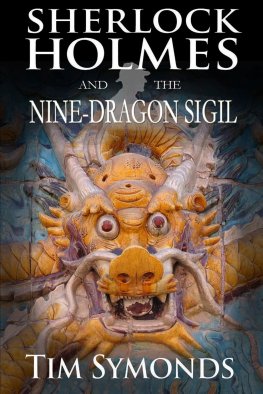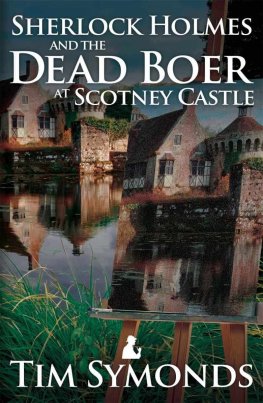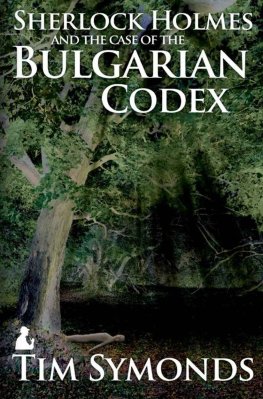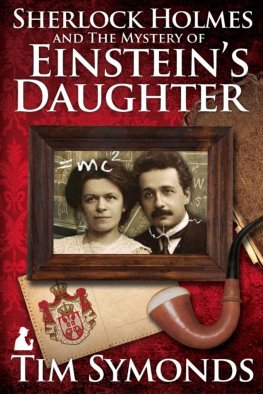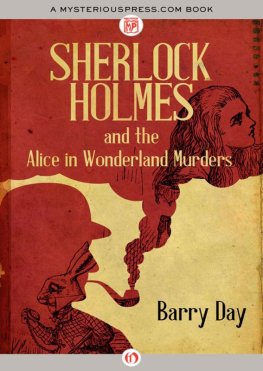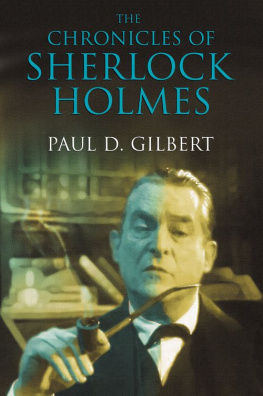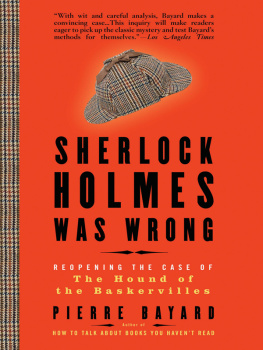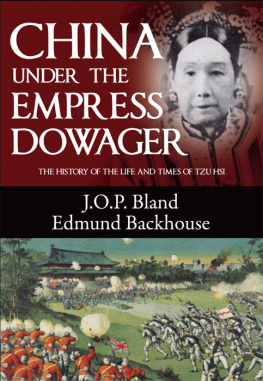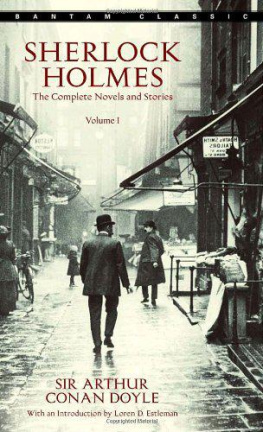Sherlock Holmes
and the Nine-Dragon Sigil
By
Tim Symonds

Sigil. Pronounced sijil. An inscribed or painted symbol or occult sign considered to have magical power
Tim Symonds was born in London. He grew up in Somerset, Dorset and the Channel Island of Guernsey. After several years travelling widely, including farming in the Highlands of Kenya and living along the Zambezi River in Central Africa, he emigrated to the United States. He studied at Gttingen, in Germany, and the University of California, Los Angeles, graduating Phi Beta Kappa in Political Science.
He is a Fellow of the Royal Geographical Society.

Nagarkot Hill Station, Himalayas
Sherlock Holmes And The Nine-Dragon Sigil was written in a converted oast house near Rudyard Kiplings old home, Batemans, in the English county of East Sussex.
To my beautiful partner Lesley
Like all my plots, Sherlock Holmes And The Nine-Dragon Sigil takes place in the halcyon days when Edward VII of Saxe-Coburg and Gotha was on the throne of England, the king-emperor for whom the Era was named, a time when yellow fogs drifted eerily along Londons half-lit streets, agile Hansom cabs with Holmes and Watson bumping around inside rattled away to heaven-knows-where, a leisurely time when women wore picture hats and did not vote, when the rich were not ashamed to live conspicuously, and the sun never set on the British flag.
Edwardian summers were reputed to be unusually warm though the Meteorological Office tells me this was not true.
By the time Edward came to the throne in 1901, Holmes and Watson had spent the best part of two decades together, solving knotty cases which baffled the best of Scotland Yards detectives. The great Consulting Detectives use of observation, deductive reasoning and scientific knowledge fascinated young and old, rich and poor, New York illuminatus or London East Ender alike. It was a period when Holmes and Watson reached their height in experience and maturity, men of the world in step with the immense British Empire. Even Watsons confidence was burgeoning despite Holmess occasional biting put-downs.
The real-life Criminologist Ashton-Wolfe later recorded in The Illustrated London News that many methods invented by Sherlock Holmes became commonplace in police practices. The quick arrival at the scene, the examination of the lock and key, the bed, the chairs, the carpet, the mantelpiece, the body and the rope.
Holmesian clubs were forming with names drawn from Watsons chronicles. A club near the pairs former lodgings called themselves the Baker Street Irregulars. At Princeton University, they titled themselves The Napoleons of Crime. In France, Le Cercle Holmsien de Paris. A womens Holmesian club in New York took an aphorism from the Roman poet Ovid as their motto: Gutta cavat lapidem, non vi sed saepe cadendo - A drop carves the rock, not by force but by persistence, although Holmes always seemed to solve the most baffling crimes in flashes of deductive brilliance, as he does (both to Watsons and to my surprise)in The Nine-Dragon Sigil.
For no discernible reason the Great Detective retired unexpectedly to his bee-farm in Sussex in late 1903 or early 1904. It came as a great shock to the faithful Watson. He was obliged to return to private practice in Londons fashionable Parish of Marylebone. Watson had practiced medicine only intermittently and reluctantly since his army days in Indias North-West Frontier and Afghanistan a quarter century before. It comes as no surprise that the old soldier, Holmess amanuensis, was soon bored with his wealthy clientele.
Not for the first time in Watsons life, Fate - Kismet - steps in. A chauffeur arrives at the Marylebone surgery with an invitation from the Foreign Office & India Office. No enterprise in which he was ever engaged would oblige Watson to undertake so arduous a journey or put him in such peril as the one he was about to be offered.
Chapter I
I Become Restless
The clock on the mantelpiece announced half-past two. I stared around me, fingers drumming on the desk. The framed medical diplomas inscribed Dr. John H. Watson MD on the wall and the stethoscope lying on the writing-table told even the most casual observer it was a doctors consulting room, and I, in the round-backed chair, the practitioner in charge.
It was the year 1906. Another fine Edwardian summer would soon pass behind me. In the outside world Homo sapiens sapiens, the most influential species on the earth, was stretching himself. An Old Etonian by the name of Charles Rolls and a fine, self-educated mechanic by the name of Frederick Royce had unveiled a motor-car which was to become the legendary Rolls Royce Silver Ghost. Communications were advancing with blinding speed. The British Army and Royal Navy were experimenting with triodes and wireless telegraphy to replace the mechanical semaphore system, the Mk 1V heliograph and the Lime Light signalling lamp of my military days in India and Afghanistan. The French pioneer Guillaume Joseph Gabriel de La Landelle coined the word aviation from Avis the Latin word for bird.
My old comrade-in-arms Sherlock Holmes had been in self-imposed retirement on the Sussex Downs for three years, watching the little working gangs of honey bees with the same fervour as he once investigated the criminal world in cases such as The Boscombe Valley Mystery and The Adventure Of The Noble Bachelor. Until out of the blue - he announced his immediate retirement I thought I had become as immutable in his life as Bank Holidays and the Changing of the Guard are to the nation. Without Holmes at the helm I felt like a diver too suddenly hoisted, a sea-beast fished up from the depths. Notoriety has become hateful to me, was his unsatisfactory explanation.
My abstracted gaze fixed on the clock-hand ticking the minutes. I reached into a drawer for my tobacco pouch. Awaiting the afternoons patients I resented the theft of time more than any theft of goods or money. My income lay largely in fees for treating the fashionable afflictions of the day such as gout, or the debilitating effect on society-womens lung capacity of tight-laced corsets. Hardly equal to discovering the mosquitos role in transmitting malaria or heroic research into yellow fever, I muttered dolefully to myself. Many patients came with ailments attributable to ill-advised leisure pursuits, or, in the case of long-suffering Lady P_____, a spouses propensities. Married into one of the highest and most exalted names in England, she arrived regularly for treatment for Neisseria gonorrhoeae in a fetching pleated silk Fortuny dress, the luscious colour between pale red and dark pink, embellished with gold pomegranates.
I came to a decision. One quick pipe and then if no patient squeezed through the door I would take a life-enhancing promenade around Regents Park. A sharp walk sets the mind working. A note on the surgery door would ask the patients to return in the morning. The tutorial with my registrar could wait an hour or two.
* * *
The click of the door behind me brought a feeling of relief. At the Baker Street Underground railway a large poster next to a newspaper vendor proclaimed a brand-new exhibition at the menagerie at the north end of Regents Park, to celebrate the 75th anniversary of the year the eminent Naturalist Charles Darwin became a Fellow of the Zoological Society.

